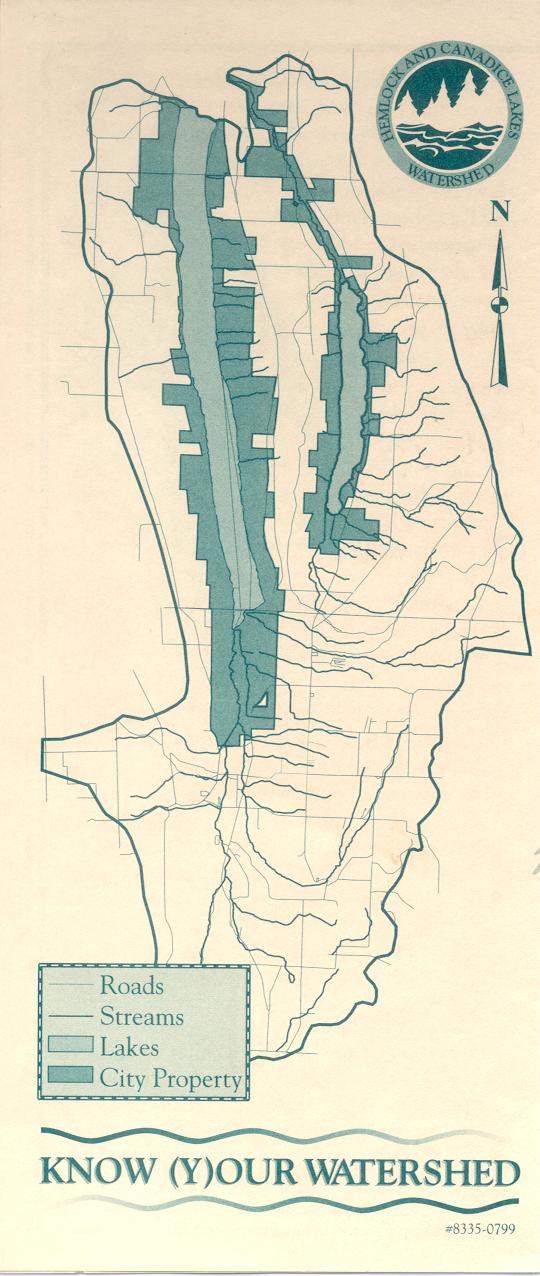Hemlock & Canadice Lakes Watershed
Important Bird Area
Important Bird Area
THE AIM of the IMPORTANT BIRD AREA (IBA) Program is to identify sites (IBAs) in each state that are essential for sustaining naturally occurring populations of bird species, and to protect or manage these sites for the long-term conservation of birds, other wildlife, and their habitats.
the program started in Europe in the 1980s. The New York State IBA Program was launched by the National Audubon Society (NAS) in 1996. At present, the Hemlock/Canadice Watershed is one of 127 sites identified in NYS that are described in Important Bird Areas in New York State , available through NAS at (518) 869-9731.
This watershed site meets a number of IBA criteria including:
supports an exceptional diversity of bird species.
contains habitat type that is rare, threatened, or unusual
is exceptional representative of natural or near-natural habitat
supports long term research an/or monitoring
The watershed is anchored by 7000 acres owned by the City of Rochester to help protect the drinking water supplied by the lakes. The City's undeveloped property (18% of entire watershed) forms a natural forest buffer that encompasses these two small Finger Lakes. this contiguous lakeside forest is unique to the region. Stewardship of the City property, while intended to primarily protect water quality, also promotes the IBA aim for long term conservation of birds, other wildlife, and their habitats. Efforts on private property compliment this important area.
THE HEMLOCK/CANADICE WATERSHED is represented by diverse habitats. Slightly more than half of the area is forest today, but only about five percent was not cleared during past 200 years for agriculture or other purposes. Areas returning to forest are successional, eventually developing into northern hardwoods or the less common oak-hickory forest. twenty percent of the watershed is shrub land. Abandoned from agriculture too recently to revert to forest, this habitat is often dominated by a few shrub species. Eleven percent of watershed lands remain in active agriculture. Cropland is primary but pasture and vineyards are found. Seven percent is open water of lakes or ponds. Four percent is maintained lawns or commercial use and three percent is wetland.
Most bird species require multiple habitats during their annual cycle. A Great Blue Heron, for example, needs shallow water or wetlands for feeding, and, this colonial nester also requires nearby forest with large crowned trees for nesting. Migratory birds passing through the watershed, such as the Common Loon, depend upon open water for nesting and feeding.
IBA designation of the Hemlock/Canadice Watershed is an important recognition of past and current efforts that retain or enhance the values of this unique natural resource. Following are recommendations for watershed neighbors to help continue this effort.
YARD MAINTENANCE can favor many birds simply by reducing the size of lawn area that is regularly mowed. If you must use lawn chemicals, use responsibly. Build an appreciation for quality habitat by providing year round food, clean water, and protective cover.
AGRICULTURAL USE should follow conservation plans designed to keep erosion to a minimum. Leave untilled buffers along drainages. Mow abandoned fields after July 15 to allow time for ground nesting birds to fledge. Use farm chemicals responsibly. Birds benefiting include Vesper, Grasshopper, and Henslow's Sparrows, Upland Sandpipers, and Horned Larks.
BRUSH LAND and EARLY SUCCESSIONAL FOREST are very important to habitats to several warbler and sparrow species. This habitat might be aided by mowing (after July 15) before brush is too large to brush hog mow. Mowing every third year is adequate to prevent forest development. consider placing nest boxes for Bluebirds or others. Include predator guards with any artificial nest box.
FOREST LAND should contain many tree species to offer a diverse food supply. White ash, tulip poplar, and cucumber tree should be retained as they may retard buildup of harmful insects. Retain at least one cavity tree per acre. Retain some aspen and basswood as excellent soft cavity trees. Retain some dead trees to stand as feeding or territorial spars for woodpeckers.
The red-Headed Woodpecker requires sixteen to twenty snags per acre, whereas another watershed resident, the Pileated Woodpecker, requires only one snag per four acres. Large areas of contiguous forest are important to the Bald Eagle.
This large bird requires water habitat as well, and finds both at the southern end of Hemlock Lake. The Northern Goshawk, Cooper's Hawk, Sharp-Skinned Hawk, and Red-Shouldered Hawk are watershed residents of special concern that also depend upon the forest.
OPEN WATER is essential for many species. During migration, lakes provide nesting and feeding areas for waterfowl. Eagles and Ospreys catch fish from lakes in an exciting aerial display. Also, small ponds throughout the watershed function as miniature ecosystems and support valuable plants, insects, crayfish, and frogs. Small cattail wetlands adjacent to ponds may attract many species such as nesting Spotted Sandpipers, or Killdeer that may nest on nearby gravel areas.
WETLANDS are among the most productive areas for wildlife. Watershed wetlands include forested swamps that are seasonally inundated, providing nesting trees for Wood Ducks. Marshlands composed of sedges, reeds, and cattails are home to American Bittens, Soras, and numerous small birds. They also provide breeding habitat for Northern Harriers. Exposed mudflats, created by seasonal lowering of lake levels, provide feeding areas for migratory shorebirds. A small peat bog or fen provides unusual plant varieties.
